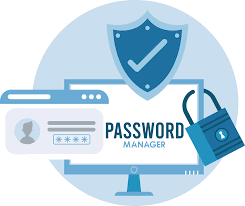Understanding Online Privacy in a Business Context
Online privacy for businesses involves protecting sensitive company data, customer information, and digital assets from unauthorised access or exploitation. This is increasingly critical as businesses store valuable data that can be targeted by cybercriminals.
Key Business Privacy Vulnerabilities
Data Storage Risks: Companies store vast amounts of sensitive information, including:
- Customer’s personal and financial details
- Proprietary business information
- Employee records
- Transaction histories
- Strategic documents
- Interconnected Systems: Modern businesses rely on:
- Cloud services
- Remote work solutions
- Third-party software integrations
- Mobile device access to company networks
- Regulatory Compliance: Businesses must adhere to various privacy regulations (GDPR, CCPA, HIPAA, etc.) or face significant penalties.
Comprehensive Business Protection Strategy
Foundational Security Measures
- Software Management
- Implement automated patch management systems
- Create a formal software update policy with assigned responsibility
- Maintain an inventory of all software assets
- Use enterprise-grade security solutions rather than consumer versions
- Access Control Systems
- Implement role-based access control (RBAC)
- Use the principle of least privilege
- Require strong password policies (16+ characters, complexity requirements)
- Deploy password managers company-wide
- Implement multi-factor authentication for all systems
- Network Security
- Segment networks to isolate sensitive systems
- Use enterprise VPN solutions for all remote connections
- Implement next-generation firewalls
- Deploy intrusion detection/prevention systems
- Conduct regular vulnerability scanning
Advanced Protection Measures
- Data Protection
- Encrypt data both in transit and at rest
- Implement data loss prevention (DLP) solutions
- Create and test data backup strategies
- Consider data anonymisation where appropriate
- Threat Intelligence and Monitoring
- Deploy security information and event management (SIEM) systems
- Consider managed detection and response (MDR) services
- Conduct regular security audits and penetration testing
- Monitor the dark web for leaked credentials
- Human Element
- Develop comprehensive security awareness training
- Conduct simulated phishing exercises
- Create clear security policies and procedures
- Establish incident response protocols
PC-Specific Implementation Guide
Hardware Security
- Enable firmware/BIOS passwords.
- Use TPM (Trusted Platform Module) for hardware-based encryption
- Implement disk encryption (BitLocker for Windows, FileVault for Mac)
- Consider physical security measures (cable locks, secure storage)
Operating System Hardening
- Use enterprise versions of operating systems when possible
- Enable automatic updates for security patches
- Remove unnecessary applications and services
- Configure host-based firewalls
- Enable built-in security features (Windows Defender, macos Gatekeeper)
Application Security
- Use application whitelisting/allowlisting
- Implement application sandboxing where possible
- Use virtualisation for high-risk applications
- Deploy endpoint protection platforms that monitor application behaviour
User Account Management
- Create separate administrator and standard user accounts
- Implement screensaver locks with short timeouts
- Configure automatic logoff after periods of inactivity
- Use group policies to enforce security settings
Remote Work Considerations
- Use remote desktop solutions with encryption
- Implement virtual desktop infrastructure (VDI) for sensitive operations
- Create clear policies for home network security requirements
- Consider endpoint monitoring for remote devices
Business-Critical Privacy Measures Not Mentioned in the Article
- Vendor Risk Management
- Assess the security practices of all vendors with access to your data
- Include security requirements in contracts
- Regularly audit vendor compliance
- Incident Response Planning
- Develop formal incident response procedures
- Assign team responsibilities
- Conduct tabletop exercises
- Create communication templates for breach notifications
- Cyber Insurance
- Evaluate coverage options for data breaches
- Understand policy requirements and exclusions
- Keep the documentation required for claims
- Privacy by Design
- Incorporate privacy considerations from the beginning of product development.
- Conduct privacy impact assessments
- Minimize data collection to what’s necessary
Implementing a Sustainable Privacy Program
- Leadership and Governance
- Assign executive responsibility for privacy
- Create a cross-functional privacy committee
- Develop metrics to measure privacy program effectiveness
- Technology Integration
- Integrate privacy controls into development pipelines
- Automate compliance checking where possible
- Consider privacy-enhancing technologies
- Continuous Improvement
- Stay informed about emerging threats
- Regularly test security controls
- Update policies based on incidents and near-misses

Business privacy protection requires a comprehensive approach that addresses technical controls, human factors, and organisational processes. The most effective programs treat privacy as a business requirement rather than merely a compliance issue.
Analysis of Privacy Steps to Apply to PCS
After reviewing the privacy measures mentioned in the document and considering essential security practices, here’s a comprehensive analysis of privacy steps that can be applied explicitly to personal computers:
Core Privacy Protection Measures
1. Operating System Security
- Update Management: Enable automatic updates for your operating system. Security patches address vulnerabilities that could be exploited.
- Built-in Security Tools: Activate Windows Security (Windows) or Security & Privacy settings (macos) to enable built-in protections.
- Secure Boot: Ensure UEFI Secure Boot is enabled to prevent unauthorised boot loaders or operating systems from loading.
2. User Account Hardening
- Limited User Accounts: Use standard user accounts for daily tasks, reserving administrator accounts for system changes only.
- Strong Authentication: Implement complex passwords (12+ characters with a variety of characters) or biometric authentication.
- Lock Screen Protection: Set short timeouts for automatic screen locking (5-10 minutes).
- Password Manager: Use a reputable password manager to generate and store unique credentials.
3. Network Security
- VPN Implementation: Install a reputable VPN service to encrypt network traffic, particularly when using public Wi-Fi.
- Router Security: Update firmware, change default credentials, and enable WPA3 encryption on your home router.
- Firewall Configuration: Enable and configure both hardware (router) and software (OS) firewalls.
- DNS Security: Consider using privacy-focused DNS services, such as Quad9 or Cloudflare’s 1.1.1.1.
4. Browser Hardening
- Privacy-Focused Browser: Consider browsers with enhanced privacy features, such as Firefox or Brave.
- Extension Management: Utilise privacy extensions (e.g., uBlock Origin, Privacy Badger), but limit their number to minimise fingerprinting risk.
- Cookie Control: Configure your browser to delete cookies after each session or use container tabs to isolate website data.
- Tracker Blocking: Enable enhanced tracking protection in browser settings.
Advanced Protection Strategies
1. Data Protection
- Full Disk Encryption: Implement BitLocker (Windows) or FileVault (Mac) to protect data if your device is stolen.
- File-Level Encryption: Utilise encrypted containers (such as VeraCrypt) for storing sensitive files.
- Secure Deletion: Install utilities that properly overwrite deleted files to prevent recovery.
- Regular Backups: Maintain encrypted backups of essential data, ideally following the 3-2-1 rule (three copies, two different media types, one offsite).
2. Application Management
- Software Audit: Remove unnecessary applications, especially those with network access.
- Installation Sources: Only download software from official sources or trusted repositories.
- Permission Review: Regularly audit application permissions to limit access to what is necessary.
- Update All Software: Enable automatic updates for applications or check for updates manually on a regular basis.
3. Anti-Malware Protection
- Multi-Layered Defence: Use both traditional antivirus and anti-malware programs for broader protection.
- Scan Schedule: Configure regular system scans at least once a week.
- Email Scanning: Enable email attachment scanning to catch malicious files.
- Behaviour Monitoring: Utilise tools that detect suspicious behaviour rather than just known signatures.
4. Physical Security
- Physical Access Control: Ensure your PC is physically secure, especially in public settings.
- BIOS/UEFI Password: Set firmware passwords to prevent hardware-level changes.
- External Port Security: Consider restricting USB ports if sensitive data is handled.
- Privacy Screen: Use privacy filters for screens when working in public spaces.
Privacy-Enhancing Habits
1. Digital Hygiene
- Regular Privacy Checkups: Periodically review privacy settings across applications.
- Data Minimisation: Limit personal information shared with applications and services.
- Search History: Use private browsing modes or privacy-focused search engines, such as DuckDuckGo.
- Metadata Awareness: Remove metadata from files before sharing, especially photos.
2. Communication Privacy
- Encrypted Messaging: Use end-to-end encrypted communication apps.
- Email Privacy: Consider using aliases or masked email addresses for different services.
- Video Conferencing: Use camera covers and be mindful of backgrounds during video calls.
- Microphone Control: Disable microphones when not in use or use hardware switches if available.
3. Social Engineering Awareness
- Phishing Recognition: Develop skills to identify suspicious communications.
- Information Disclosure: Be cautious about the personal details you share online.
- Link Verification: Hover over links to verify destinations before clicking.
- Unexpected Communications: Verify through alternate channels before responding to unusual requests.
Implementation Considerations
1. Usability Balance
- Focus on implementing privacy measures that offer the most protection with the least impact on usability.
- Prioritize automated protections over those requiring constant user vigilance.
2. Layered Approach
- No single privacy measure is sufficient; combining multiple strategies creates a more robust defense.
- Address privacy at each level: hardware, operating system, applications, and user behaviour.
3. Regular Maintenance
- Schedule recurring privacy maintenance tasks (updates, permission reviews, data purges).
- Create reminders to check for software updates if automatic updates aren’t enabled.
These privacy measures provide comprehensive protection for personal computers, addressing technical vulnerabilities while also accounting for the human element of privacy protection. By implementing these steps, users can significantly reduce their digital privacy risks while maintaining productive computer use.
As the digital landscape continually evolves, so do the threats that accompany it. In this environment, web browsers serve as essential gateways to the vast expanse of the Internet for enterprises. Unfortunately, due to their complicated ecosystems and often insufficient security measures, these browsers have become prime targets for cybercriminals.
The intricate nature of browsers creates an attractive attack surface for malicious actors seeking to exploit vulnerabilities. Recent advancements in artificial intelligence (AI) have further intensified this battleground, enabling both attackers and defenders to leverage technology in their strategies.

On one hand, AI has empowered cybercriminals to enhance phishing attacks, making them more sophisticated and challenging to detect. On the other hand, security teams are utilising AI-driven solutions to develop more robust detection capabilities and protective measures against these continually evolving threats.
Additionally, AI assists security professionals in managing the increasingly complex array of security products available today. By streamlining processes and enhancing collaboration among tools, AI eases some of the burdens faced by security teams navigating a rapidly changing threat landscape.
AI-Powered Phishing: A New Age of Browser Threats
Phishing attacks have been a longstanding tactic used by cybercriminals to trick individuals into revealing sensitive information. Traditionally, these schemes displayed telltale signs, such as grammatical errors and suspicious URLS, making them relatively easy to identify.
However, the advent of artificial intelligence has transformed the phishing landscape. Cybercriminals can now utilise AI algorithms to craft highly tailored and convincing phishing messages that closely mimic legitimate communications with remarkable accuracy. This level of sophistication makes it increasingly difficult for users to distinguish between genuine and fraudulent requests.
Today’s phishing attacks predominantly occur within web browsers, exploiting their vast attack surface while often evading conventional security measures. As users browse the internet, they may unknowingly encounter rogue websites crafted to steal personal data or login credentials.

The challenge for individuals and organisations is significant. Traditional defences are becoming less effective against these evolving threats, necessitating more vital awareness and new protection strategies in an era when technology serves both excellent and malicious purposes.
The rise of sophisticated phishing attacks has become a significant concern in the digital landscape. Advancements in artificial intelligence (AI) now enable malicious actors to analyse vast amounts of data from sources like social media and public records.
With this information, they can craft highly personalised phishing messages that resonate with their targets. By utilising advanced language models, attackers can even mimic the writing styles of colleagues or trusted contacts.
These meticulously designed emails and messages often appear nearly indistinguishable from legitimate communications. As a result, employees within organisations may feel compelled to click on malicious links or download infected attachments without a second thought.
This level of personalisation dramatically increases the chances of falling victim to these scams. Once an individual interacts with a phishing attempt, it can lead to browser infections or broader compromises within enterprise systems.
Thus, the intersection of AI technology and cybercrime highlights the urgent need for robust cybersecurity measures and ongoing employee training.
Automated phishing at scale has revolutionised how cybercriminals execute their campaigns. With the assistance of artificial intelligence, attackers can now launch sophisticated phishing attempts that reach millions of users simultaneously.

These AI-driven systems personalise messages for each recipient, increasing the chances of successful engagement. By analysing user behaviour and interaction patterns, machine learning models quickly adapt their strategies to optimise results.
This level of customisation and speed presents significant challenges for conventional security measures, which require assistance to keep pace with evolving threats. As these automated systems learn from each interaction, they become increasingly adept at bypassing traditional defences.
Consequently, the risk to browser users worldwide escalates dramatically. Cybersecurity teams must continually enhance their methods to counteract these agile attacks and protect sensitive information from falling into the hands of malicious actors.
In recent years, integrating artificial intelligence into web browsers has become an essential strategy for cybersecurity professionals. As cyber threats evolve in complexity and scale, traditional security measures, such as Endpoint Detection Systems and Secure Web Gateways, often struggle to keep pace.
AI-enhanced tools are now stepping in to fill these gaps. They leverage advanced algorithms to identify patterns and anomalies that could indicate an attack. This proactive approach enhances detection rates and significantly reduces response times.

One of the standout features of AI integration is real-time threat analysis. By continuously monitoring user activity and traffic, these systems can swiftly pinpoint suspicious behaviours. When a potential threat is detected, immediate countermeasures can be enacted automatically.
Moreover, machine learning capabilities allow these tools to adapt and learn from new types of threats over time. This ongoing evolution ensures that browsers remain a fortified line of defence against increasingly sophisticated cyberattacks.
Ultimately, the use of AI in browser security transforms how we navigate the digital landscape, making it safer for users worldwide.
Real-time threat Analysis uses advanced AI algorithms to monitor web content as it loads actively. This process involves scanning for various security threats, including malicious code, suspicious URLs, and indicators of phishing attempts.
Machine learning models are pivotal in this analysis. Trained on extensive datasets that encompass diverse online threats, these models can identify anomalies and patterns indicative of malicious activity.
When a potential threat is detected, users receive immediate warnings. This proactive notification system allows individuals to avoid dangerous sites before any harmful scripts can be executed.
Additionally, the technology helps prevent malware downloads through the browser. By intercepting threats before they infiltrate a user’s device, Real-Time Threat Analysis significantly enhances online safety.
Overall, this sophisticated approach mitigates risks and fosters a more secure browsing experience for all users.
Behavioural biometrics is transforming user authentication by leveraging the unique ways individuals interact with their devices. This technology focuses on patterns in how users type, move their mouse, and perform touch gestures.
Artificial intelligence (AI) systems analyse these behavioural traits to create a digital fingerprint for each user. By continuously monitoring these movements in real-time, AI can identify deviations from established patterns.
When anomalies are detected—such as unusual typing rhythms or erratic mouse movements—the system can alert administrators to potential unauthorised access attempts. This capability helps safeguard user accounts against both human threats and automated bot activities.
Incorporating this additional layer of security into authentication processes significantly enhances protection for sensitive information accessed through web browsers. As cyber threats evolve, using behavioural biometrics stands out as a proactive approach to maintaining online security.
Ultimately, this innovative technology not only bolsters security but also improves the overall user experience by allowing seamless access for legitimate users while keeping malicious actors at bay.
Browser Detection and Response (BDR) Extensions
In recent years, companies have developed innovative AI-powered browser extension security products to protect users online. A notable example is SquareX, which offers a robust suite of features designed to enhance internet safety.
These tools play a crucial role in blocking access to malicious websites that could compromise user data or devices. They also leverage sophisticated algorithms to detect phishing attempts, warning users before they unwittingly provide sensitive information to cybercriminals.

Another critical function of BDR extensions is their ability to prevent tracking by unwanted third parties. This feature enhances privacy and helps users maintain control over their online footprint.
By utilising machine learning technologies, these security products continuously evolve, improving their detection capabilities with each new threat that surfaces. This adaptive technology allows them to stay ahead of cyber threats, providing real-time protection as users navigate the web.
Ultimately, BDR extensions simplify security management for everyday internet users. By integrating advanced protection mechanisms into the browsing experience, they empower individuals to explore the digital world with greater confidence and peace of mind.
Streamlining Security Management with AI
As the landscape of cybersecurity becomes increasingly complex, security teams face mounting pressure to safeguard organisations and their users. This heightened complexity stems from a surge in cyber threats, evolving technologies, and the growing volume of data that must be monitored.
Artificial Intelligence (AI) emerges as a vital ally in tackling these challenges. By automating routine tasks, AI enhances the efficiency of security operations, allowing teams to focus on more strategic initiatives.
Furthermore, AI algorithms can analyse vast amounts of data in real-time, identifying potential threats before they escalate into significant incidents. This proactive approach reduces response times and minimises the impact of breaches.
Additionally, machine learning models continuously adapt by learning from new threats and vulnerabilities. This ensures that security measures remain robust against emerging risks.
Security products focused on policy management are engineered to deliver strong defence against a variety of threats, with their success largely dependent on the establishment of intricate and well-defined policies. These policies determine the system’s actions in different security situations, including identifying possible threats, preventing harmful activities, and ensuring adherence to compliance regulations. However, developing these policies is a challenging task. To tackle this issue, security firms are increasingly utilising advanced Large Language Models (LLMs). These AI-driven models possess the ability to comprehend and produce text that resembles human language, making them essential for streamlining and enhancing policy management. LLMs can review current security policies, propose enhancements, and create new policies grounded in best practices and historical insights.
Furthermore, Automated Threat Response AI systems can manage routine security operations such as monitoring network activity, examining security logs, and addressing low-level threats. By taking care of these labour-intensive tasks, AI allows security experts to concentrate on more intricate challenges that require human judgment. Automated measures may involve isolating infected browsers, blocking dubious IP addresses, or updating security protocols instantaneously.
Moreover, Enhanced Security Analytics powered by AI offers a more profound understanding of security events and potential weaknesses. Machine learning algorithms can integrate data from multiple sources to identify trends and forecast upcoming threats. This predictive ability enables security teams to prioritise risks effectively and allocate resources wisely, thereby strengthening the organisation’s overall defence strategy.
In today’s business environment, web browsers have become essential, with employees dedicating as much as 90% of their working hours to them. The rise of remote work, the implementation of bring-your-own-device (BYOD) policies, and the growing use of Software as a Service (SaaS) have increased our dependence on browsers, creating significant vulnerabilities in cybersecurity.
The incorporation of artificial intelligence into offensive and defensive browser security strategies represents a crucial change in digital protection. While AI enables cybercriminals to develop more sophisticated and scalable phishing attacks, it also provides defenders with enhanced capabilities to identify and counteract browser-related threats.

Successfully navigating this complex landscape requires leveraging AI’s strengths to bolster browser security while remaining cautious about its potential for misuse. Organisations and individuals need to implement AI-powered browser security measures to stay ahead of advanced threats. By utilising AI for immediate threat detection, automated responses, and streamlined security management, we can foster a safer online experience. As cyber threats targeting browsers continue to evolve, our approaches must adapt accordingly to ensure that AI serves as a protective tool rather than a risk factor.
To keep your data safe from prying eyes, Maxthon uses cutting-edge encryption technologies. These sophisticated protocols diligently work to maintain the confidentiality of your sensitive information as you explore the web.
In today’s digital landscape, a robust security strategy is not merely an option; it is an absolute necessity for organisations of all sizes. Cyber threats are evolving at an alarming rate, becoming more sophisticated and pervasive. As businesses increasingly rely on technology, the potential risks associated with cyberattacks grow more severe, threatening not just data but the very foundation of the organisation itself.

Developing a comprehensive cybersecurity strategy goes beyond simply protecting data. It involves a proactive approach to safeguarding the entire organisation against a myriad of evolving threats while ensuring that security measures align seamlessly with business objectives.
To navigate this complex terrain, organisations must focus on six essential steps to enhance their cybersecurity posture. The first step is paramount: protect your data. Understanding where your data resides, who has access to it, and how it is being utilised is critical.
Implementing strong encryption protocols is vital to maintaining the confidentiality of sensitive information. Additionally, organisations should prioritise regular system updates and patches to guard against vulnerabilities that cybercriminals may exploit. Each measure fortifies the organisation’s defences, creating a more secure environment in which to thrive.
In the shadowy realm of cybersecurity, minimising the attack surface is a crucial line of defence. Imagine your network as a fortress, where every entry point represents a potential vulnerability waiting to be exploited by an intruder. The first step in fortifying your defences is conducting a thorough audit of your network.

As you sift through the digital landscape, identify unnecessary services, applications, and systems that linger like ghosts from the past. These relics not only clutter your environment but also serve as tempting targets for attackers seeking a straightforward breach.
Next, confront outdated hardware and software that may have once served a purpose but now weaken your defences. Deactivating these relics can significantly reduce the opportunities for malicious actors.
Finally, ensure that all access points are closely monitored and controlled. By implementing robust security protocols and regular monitoring, you create a vigilant watchtower that safeguards your fortress against potential threats lurking in the shadows. In this relentless battle for security, every small action contributes to a more resilient stronghold.

Protecting sensitive data is paramount in the digital realm. Imagine a fortress where every entry point is heavily guarded. This is the essence of complicating unauthorised access to your data.
Implementing multi-factor authentication (MFA) is crucial to fortifying this fortress. It’s like requiring two keys to unlock a treasure chest, ensuring that even if a password is compromised, an additional layer of security stands firm.
Next, consider the layout of your fortress through role-based access controls (RBAC). Under these controls, each employee is granted access only to the rooms they need for their tasks, minimising the risk of sensitive data falling into the wrong hands.
But the work doesn’t end there. It’s essential to review and update these access permissions regularly. As roles evolve and responsibilities shift within your organisation, it’s vital to adjust who can enter which rooms of your data fortress.

By combining these strategies, you create a complex web of security that deters unauthorised access and protects your valuable information. Vigilance is key in this ever-changing landscape, ensuring that your fortress remains impenetrable against potential threats.
In today’s digital landscape, the threat of a security breach looms over every organisation, regardless of how robust their preventive measures may be. Even the most fortified systems can fall victim to cyberattacks. Therefore, it is crucial to prepare for the unexpected.
Implementing advanced threat detection tools is essential. These tools continuously monitor real-time network activity, allowing for the early identification of anomalies that may signal a breach. Imagine receiving an alert just moments after a potential threat is detected—this rapid response capability can be the difference between a minor incident and a catastrophic breach.
But detection is only half the battle. Developing a comprehensive incident response plan is equally essential. This plan should clearly outline the steps to be taken when a breach occurs, including communication protocols to inform stakeholders and roles assigned to team members. Each individual must understand their responsibilities, ensuring that everyone knows exactly what to do in a crisis.

Acting swiftly and decisively can significantly minimise the impact of a breach. Protecting your data and maintaining trust with clients and partners hinges on your ability to respond effectively when the unthinkable happens. In this fast-paced digital world, being prepared is not just an option; it’s a necessity.
In the ever-evolving landscape of business, aligning cybersecurity with core organisational priorities is not just a recommendation; it’s a necessity. Imagine a bustling company full of ambition and innovation, where every team is focused on achieving strategic goals. In this vibrant environment, cybersecurity should seamlessly weave into the fabric of everyday operations, enhancing rather than hindering progress.

To achieve this harmony, it’s essential to engage in regular risk assessments. Picture a dedicated team meticulously evaluating potential threats lurking in the shadows, ready to disrupt business objectives. By identifying these vulnerabilities, organisations can effectively prioritise their security investments, ensuring that resources are allocated where they matter most.
Moreover, a well-crafted security strategy should serve as a sturdy backbone for growth. It’s not just about protecting data; it’s about empowering the entire organisation to thrive. When cybersecurity measures are aligned with business priorities, they transform from mere obstacles into enablers of success, fostering an environment where innovation can flourish without fear. In this way, companies can confidently stride into the future, knowing their security posture is robust and strategically sound.

Maximising operational excellence is not merely a final step; it is an ongoing journey that requires dedication and resilience. Picture your organisation as a living entity constantly evolving in an ever-present landscape of threats.
To thrive, you must cultivate a robust security culture. This means every employee, from the front desk to the executive suite, should grasp their role in safeguarding sensitive data. Imagine regular training sessions where staff members engage in interactive workshops, learning to recognise phishing attempts or suspicious activities.
These initiatives should be complemented by a suite of awareness programs that keep security at the forefront of everyone’s mind. By fostering an environment where questions are encouraged, and knowledge is shared, you create a vigilant workforce.

Furthermore, embracing automation can significantly enhance your security operations. Picture automated systems that swiftly detect anomalies, allowing your team to focus on strategic responses rather than getting bogged down by routine tasks. This not only improves threat detection but also drastically reduces response times, ensuring that your organisation remains agile in the face of challenges.
In conclusion, operational excellence is an evolving commitment. By investing in training, fostering a security-first mindset, and harnessing technology, you can ensure a resilient future.
As the digital landscape evolves, so too must our approach to cybersecurity. The initial steps taken to formulate a strategy are merely the foundation of a much larger structure. Each measure implemented is a brick laid in the wall of defence, but the world of cyber threats is ever-changing.

Continuing enhancement is essential to fortifying your defences. This means regularly reviewing and updating your security protocols, ensuring they are aligned with the latest threats and technological advancements.
Building a resilient cybersecurity posture requires vigilance and adaptability. It’s not just about having a plan in place; it’s about anticipating potential breaches and being prepared to respond swiftly.
Engaging in continuous training for your team fosters a culture of awareness and readiness. Every member plays a crucial role in this collective effort. As new challenges arise, so should your strategies, evolving into a robust shield against the unknown dangers lurking in cyberspace.
Maxthon: Your Trusty Ally in the Digital Voyage

In a world where our lives are intricately interwoven with the expansive realm of the internet, protecting our online identities has never been more imperative. Imagine embarking on a thrilling journey through the vast and often uncharted landscapes of cyberspace, where each click reveals a treasure trove of insights and exhilarating adventures. However, amid this immense digital universe, hidden dangers lurk, ready to jeopardise your personal information and overall safety. To navigate this intricate terrain with confidence, it’s essential to select a browser that prioritises your security. This is where Maxthon Browser comes into play—your reliable companion on this voyage, and the cherry on top? It won’t cost you a dime.
Maxthon: The Premier Choice for Windows 11 Aficionados
Maxthon stands out in the crowded arena of web browsers thanks to its unwavering commitment to safeguarding your online privacy. Envision it as a vigilant sentinel, always on guard against the multitude of threats that populate the digital wilderness. With an impressive array of built-in features—including ad-blockers and anti-tracking tools—Maxthon works diligently to protect your virtual identity. As you traverse the web on your Windows 11 device, these protective measures create a formidable shield against unwelcome advertisements and disrupt any attempts by websites to surveil your online behaviour.
The Harmonious Blend of Maxthon and Windows 11
As you navigate the vibrant digital universe on your Windows 11 machine, Maxthon’s dedication to your privacy becomes increasingly apparent. It utilises state-of-the-art encryption methods to secure your sensitive information throughout your online journeys. This means that while you explore the uncharted territories of cyberspace, you can engage in your digital quests with a sense of assurance, knowing that your data remains protected from prying eyes.
